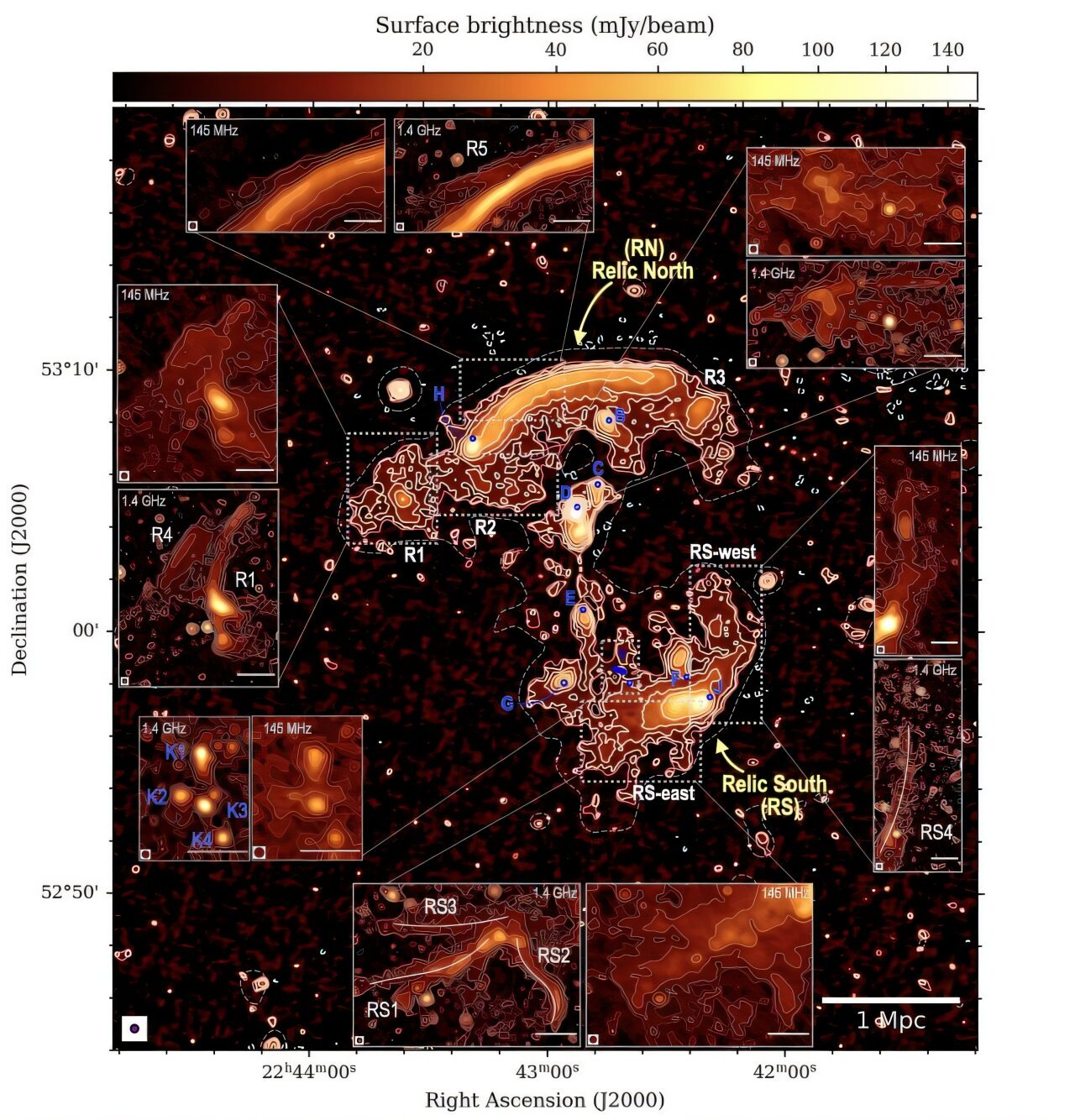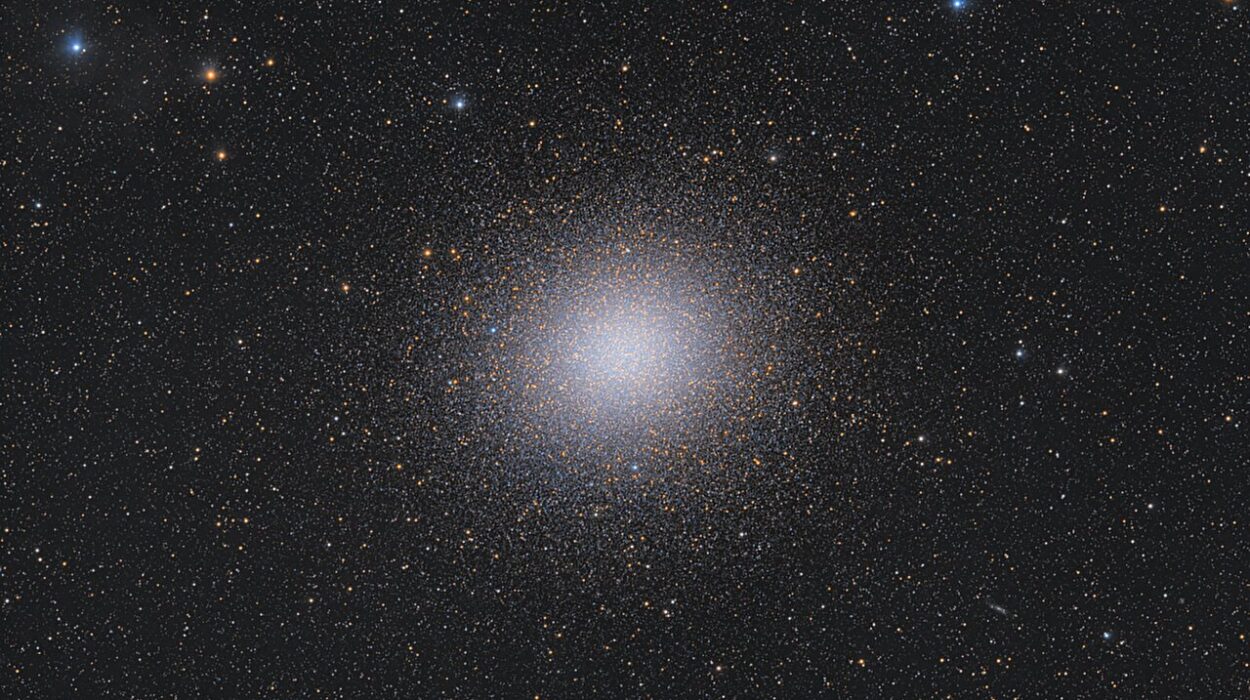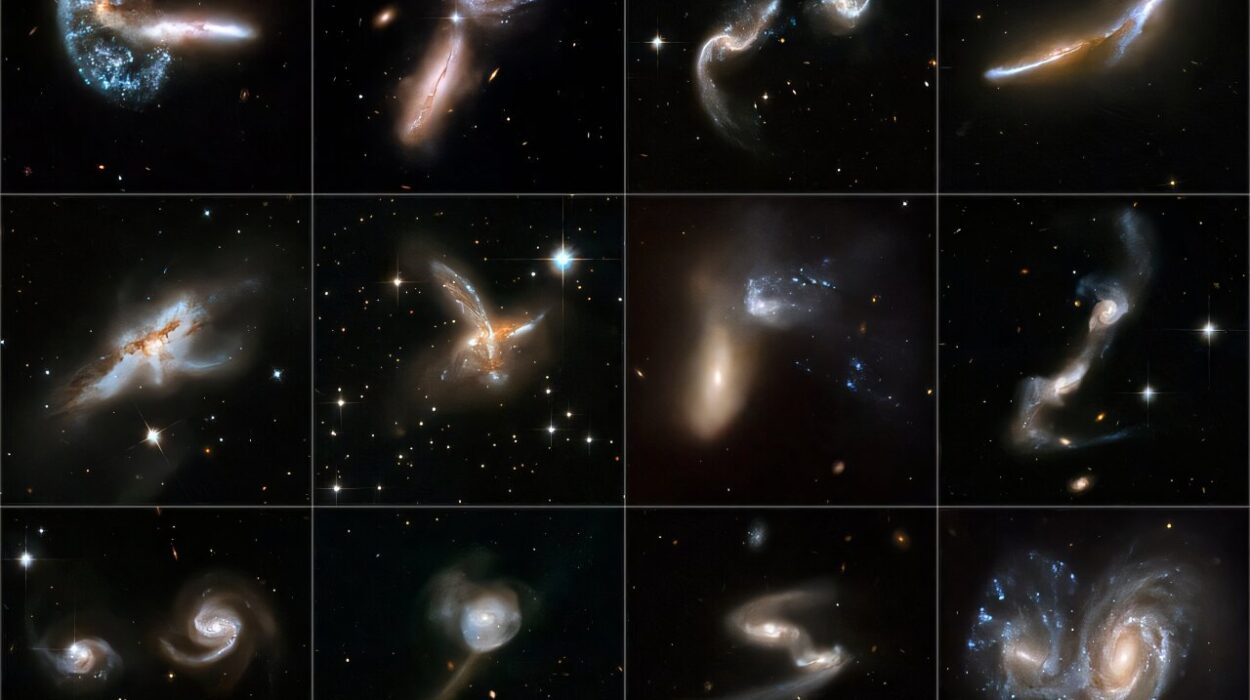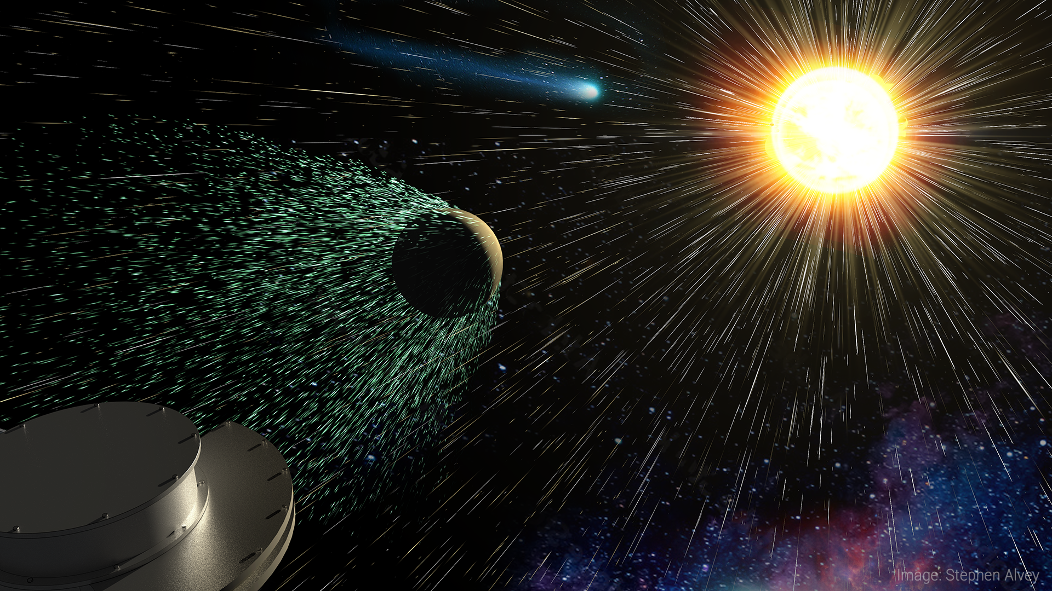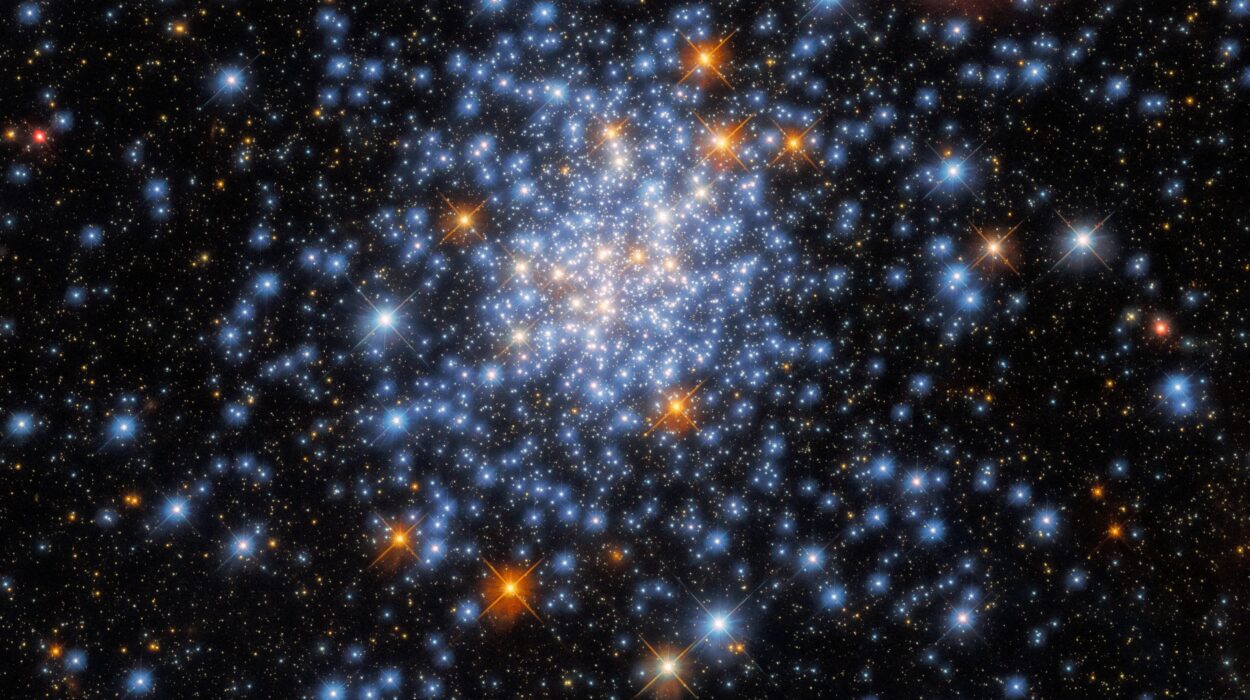Amid the vast, silent canvas of deep space, astronomers have learned to listen. Not with ears, but with colossal, ground-spanning radio antennas that stretch like spiderwebs across continents. Among these technological marvels, few are more extraordinary than LOFAR, the Low Frequency Array, a sprawling network of thousands of antennae scattered across Europe. Unlike traditional telescopes that capture visible light, LOFAR is attuned to the universe’s deepest bass notes—the low-frequency radio waves that ripple out from some of the most dramatic, violent events in the cosmos.
Recently, these long radio tendrils tuned into an ancient collision—a galactic train wreck frozen in the slow-motion expanse of time and space. The target: a galaxy cluster known as CIZA J2242.8+5301, though among astronomers it’s affectionately referred to by a more colorful name—the Sausage Cluster. What LOFAR uncovered within its bones offers a groundbreaking glimpse into cosmic relics, shockwaves, and the turbulent lives of galaxy clusters.
A Sausage in the Sky
You might imagine something more delicious than astrophysical when you hear “Sausage Cluster,” but the name is more than whimsy—it refers to the distinctive, elongated shape of a powerful radio relic flanking the cluster’s northern edge. This cluster lies about 2.5 billion light-years away from Earth, and is locked in the throes of a cataclysmic merger: two massive galaxy clusters smashing together at thousands of kilometers per second. It’s a cosmic car crash—but on a scale so vast it unfolds over a billion years.
Galaxy clusters are the largest gravitationally bound structures in the universe, colossal webs of galaxies, hot gas, and dark matter. When these giants collide, they generate enormous shockwaves through the intergalactic medium—like sonic booms in space. These shockwaves light up the surrounding plasma, not in visible light, but in the faint, ghostly glow of radio frequencies. These emissions are called radio relics, and they serve as fossils of ancient violence—fossils that LOFAR can study with unprecedented sensitivity.
LOFAR: A Cosmic Time Machine
LOFAR isn’t just any radio telescope—it’s a revolutionary system optimized for low-frequency radio astronomy, observing the sky in the 10 to 240 MHz range. That’s far below what most other telescopes can detect, and it’s ideal for detecting the low-energy electrons that zip around galaxy clusters after shockwaves pass through them. LOFAR can peer deep into relic radio signals, unearthing the universe’s forgotten whispers.
To study the Sausage Cluster, an international team led by Giulia Lusetti from the University of Hamburg turned LOFAR’s Low Band Antennas (LBA) toward this cosmic battlefield. This study, recently published on the arXiv preprint server, zeroes in on observations at a mere 45 MHz—the lowest frequency study ever conducted on this cluster. The goal: understand the physics of radio relics, and unravel what these wispy arcs of radio energy can tell us about cosmic collisions.
The Relics: Echoes of Cosmic Violence
Radio relics are not galaxies or stars. They are vast, diffuse arcs of synchrotron radiation—emissions from high-speed electrons spiraling through magnetic fields. These relics trace out the shockwaves that ripple through the intergalactic medium during a merger. Think of the northern relic in the Sausage Cluster as a smoke ring, blown out by a galaxy-sized cannon.
In LOFAR’s low-frequency vision, the northern relic glows like a warped ribbon of radio light, stretching 7.2 million light-years long and 2.5 million wide. The southern relic, less symmetrical, sprawls across 4.9 by 1.7 million light-years. These relics are not static—they evolve, fade, and morph as the cluster continues its long, gravitational death-dance.
Beyond these two famous relics, LOFAR revealed a tangled web of other diffuse, relic-like structures, some showing “head-tail” morphology. These are likely galaxies with active nuclei, their jets swept backward by the pressure of the cluster’s environment, like comets’ tails dragged by solar wind. The intricate interactions between these features and the surrounding emissions hint at a far more complex and dynamic environment than previously imagined.
Decoding Spectral Gradients
By analyzing spectral index maps—which show how the brightness of the relics changes with frequency—Lusetti’s team unearthed striking patterns. The spectral index is a measure of how fast the signal fades as frequency increases. In general, older or more energetically depleted electrons emit more steeply falling spectra.
In both relics, the spectral index steepens from the outer edges toward the cluster center. This is expected: the shockwave itself, where electrons are freshly accelerated, sits at the outer edge. As those electrons radiate and cool, their energy decreases, and so does their spectral signature. The northern relic showed an integrated spectral index of −1.09, indicating relatively strong shock acceleration. The southern relic, with a steeper index of −1.34, suggests a weaker shock and a more turbulent or evolved structure.
By relating the spectral index to shock strength, astronomers estimated Mach numbers—a measure of how fast the shock is moving relative to the speed of sound in the surrounding plasma. The northern relic, with a Mach number of 4.8, corresponds to a fast, relatively clean shock. The southern relic’s lower Mach number of 2.6 implies a more complicated, possibly decaying shockfront.
Probing the Heart of a Cosmic Collision
Understanding the shape and brightness of these relics helps astronomers reconstruct the geometry and physics of the merger event. The team used numerical models to simulate the surface brightness profile of the northern relic. Their best-fit model suggests that the relic is seen almost edge-on, meaning we’re viewing the shockwave from the side. The data indicate minimal projection effects, low magnetic field variability, and little shock deformation—meaning the northern relic is a relatively pristine example of a planar shock front lighting up the intergalactic medium.
This is a big deal because most radio relics in other clusters are messy, foreshortened, or overlaid with other signals. The Sausage Cluster, especially the northern relic, stands out as a “textbook case”, an astrophysical Rosetta Stone for interpreting cluster mergers.
Cosmic Rays and Magnetic Beacons
One of the great mysteries in astrophysics is how cosmic-ray electrons—which are born in supernovae, black holes, or cluster shocks—gain and retain their energies over such long distances. The LOFAR study brings us closer to answering that. The presence of coherent relics at extremely low frequencies confirms that even low-energy cosmic-ray electrons, which are notoriously difficult to detect, can be traced far from their acceleration sites.
Moreover, these electrons don’t shine unless they’re spiraling through magnetic fields. That means relics are also beacons of magnetic structure in the cosmos. By mapping their emissions, scientists are essentially tracing out the magnetic anatomy of a galaxy cluster, something impossible to do with traditional optical telescopes.
The Sausage Cluster’s relics reveal a magnetic field that is uniform enough to support large-scale synchrotron emission, yet chaotic enough to allow for mixing, acceleration, and complex morphology. These dual characteristics make it an ideal natural laboratory for studying how magnetism and plasma turbulence behave on megaparsec scales.
A Symphony of Radio Silence Broken
There’s something deeply poetic about studying cosmic relics at these whisper-thin frequencies. At 45 MHz, LOFAR is listening to signals that are billions of years old, traveling from the edge of a radio relic that formed before Earth had complex life. These are not the loud, luminous beacons of quasars or pulsars, but the subtle hums of intergalactic shockwaves, barely audible above the cosmic static.
It’s like hearing the faint strumming of a harp after a symphony of explosions. These emissions tell us not just that something happened—but how, when, and with what intensity. They offer a time-stamped record of astrophysical trauma, encoded in radio waves.
Why the Sausage Cluster Still Matters
The Sausage Cluster isn’t just an amusing name on an astronomical map—it’s a goldmine of information. Because it is nearly edge-on, well-separated, and spectrally well-behaved, it offers a rare glimpse into the clean mechanics of cluster mergers. Most other clusters are messier—seen at awkward angles, confused with foreground galaxies, or smeared out by projection effects. The Sausage Cluster is a cosmic laboratory where plasma physics, shock acceleration, cosmic-ray dynamics, and magnetohydrodynamics can all be tested simultaneously.
The LOFAR study doesn’t just add detail—it rewrites what we thought was possible at these frequencies. It shows that with the right tools, astronomers can map the faintest shadows of ancient cataclysms and use them to reconstruct the gravitational histories of the universe’s largest structures.
The Road Ahead: Toward Deeper Silence
This is only the beginning. LOFAR is just one piece of an international effort to map the low-frequency universe. Future instruments like the Square Kilometre Array (SKA) will have even greater sensitivity and resolution, able to detect even fainter relics across a wider stretch of the sky.
But even now, thanks to LOFAR and researchers like Giulia Lusetti and her team, we know more than ever about the life and death of galaxy clusters, about how matter rearranges itself across cosmic scales, and about how ancient shockwaves still hum quietly across billions of light-years.
Somewhere, deep in the void between galaxies, the remnants of ancient collisions still sing. And now, finally, we have begun to listen.
Reference: G. Lusetti et al, A view of the CIZA J2242.8+5301 galaxy cluster at very low radio frequencies, arXiv (2025). DOI: 10.48550/arxiv.2505.23402
